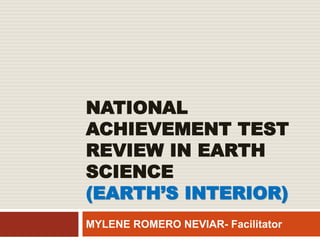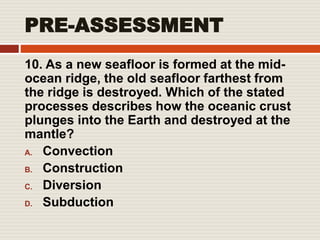This document provides an overview of the Earth's interior structure based on seismic wave evidence. It discusses how seismic waves like P-waves and S-waves travel through different layers, revealing details about the composition and state of those layers. The existence of an S-wave shadow zone indicated the inner core is solid, while P-wave refraction showed bending consistent with a liquid outer core. Later discoveries of an inner core within the outer liquid core helped establish the current model of a solid inner core within a liquid outer core surrounded by the mantle and crust.


















































































